Borders slow things down. For this film, the original Canonet had to cross a customs border. That delay is a good part of why this is only the third roll from this camera. The camera dissapeared for long enought that I thought we might have lost it. Eventually, it showed up.
For those late to the party, you can read about the Travelling Canonet project here. We have over 50 photographers on 4 continents taking/waiting to take part. Two Canonets are involved, each travelling in a different direction. Participants take 5 or more shots and send the camera on to the next person on the list. Previous pictures from the the first and second rolls from this camera and from the first, second, third, fourth and fifth rolls from the other camera are also available on 35mmc.
This article covers the third roll from the older of the two cameras. Previous rolls from this camera took us largely on a tour of the UK. By the end of this film, this veteran camera had left the UK, probably for the last time ever, and branched out to Scandanavia. The pictures below chart its journey. The text supplied by the photographers themselves is shown in italic type.
Rock
Rock writes:
The only thing I can say is that all the frames were shot in my home village just outside Rochester, Kent. I used the sunny16 method which I think came out as f11. With a yellow filter I shot at f8. I opened up the aperture for the cemetery shot to reduce the depth of field.
Frame 1
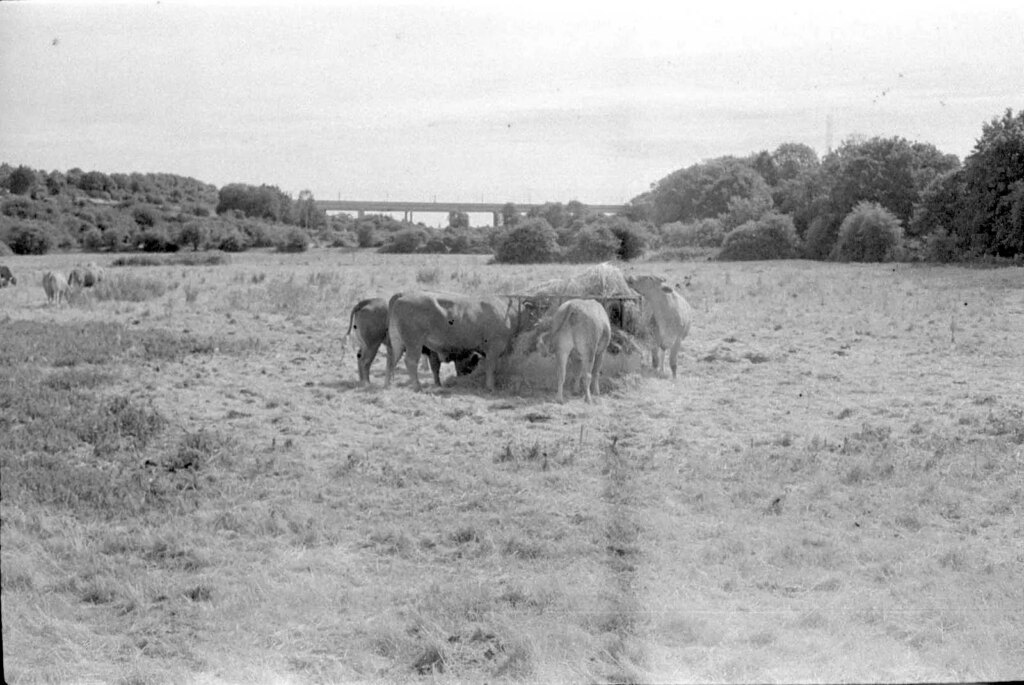
Kentish cows
Frame 2
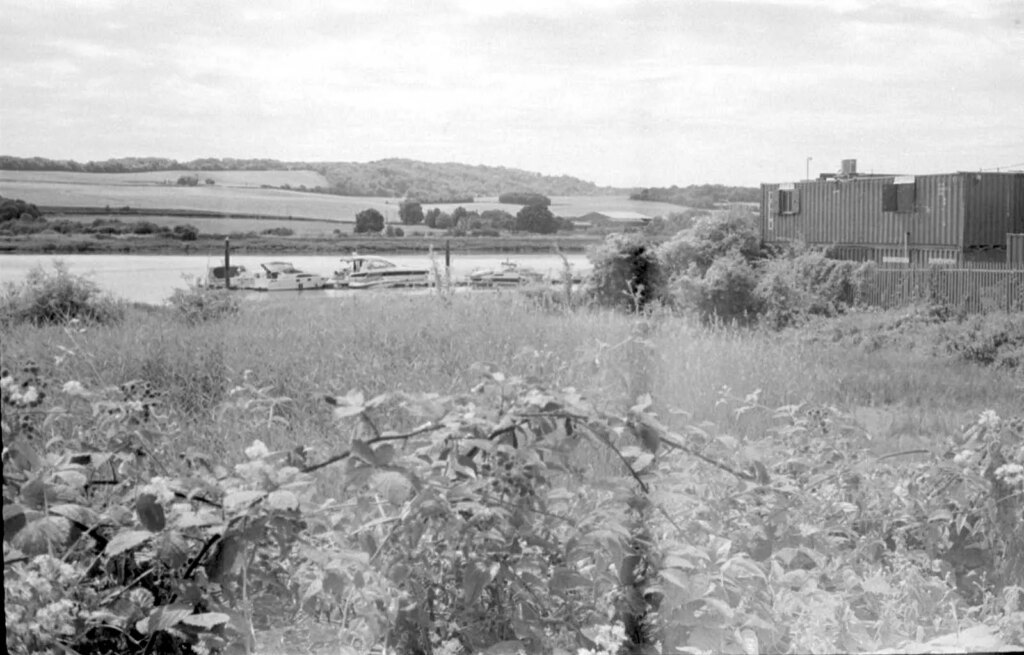
The Medway valley?
Frame 3
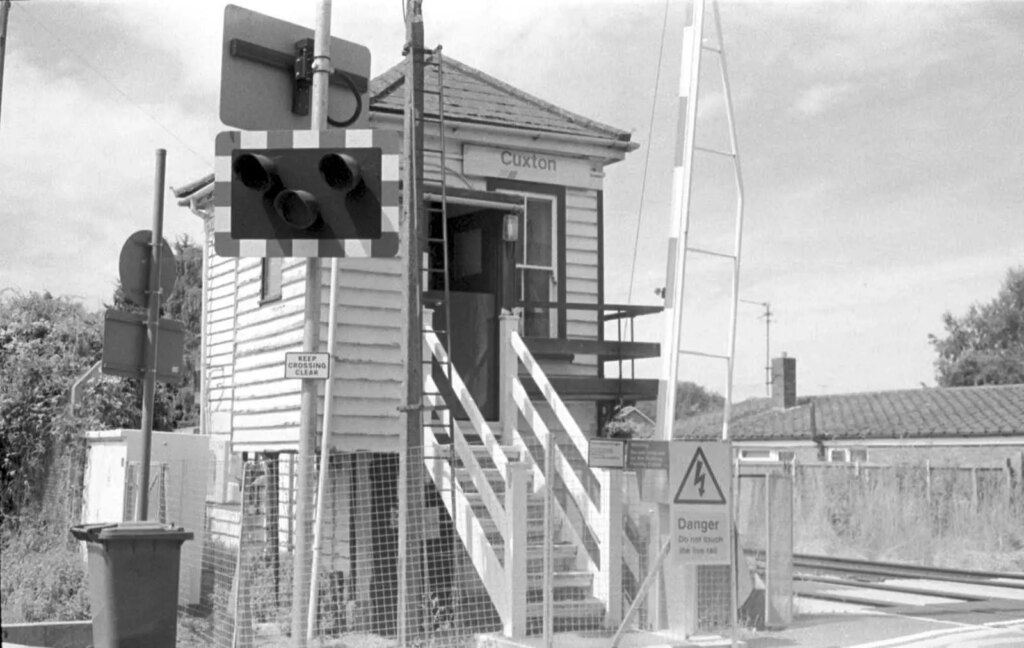
Cuxton level crossing
Frame 4
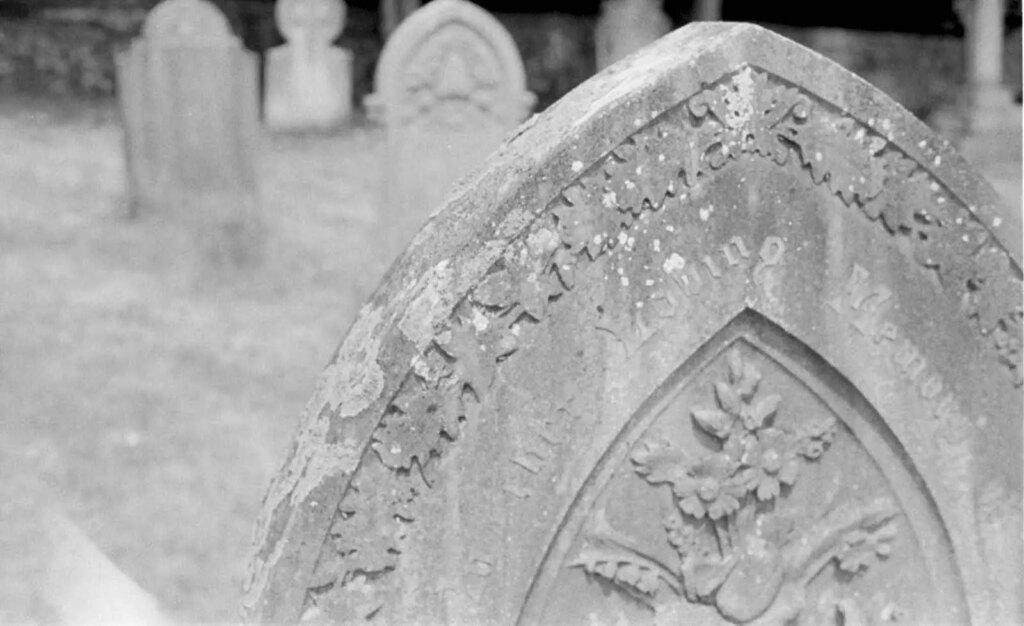
“I opened up the aperture for the cemetery shot to reduce the depth of field”
Frame 5
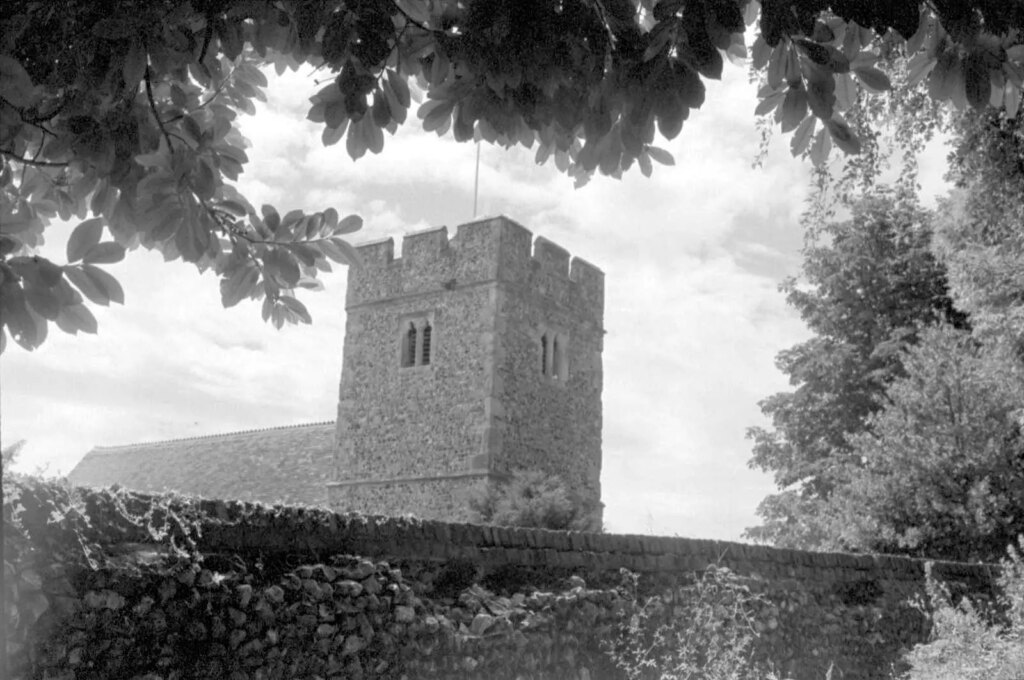
Frame 6
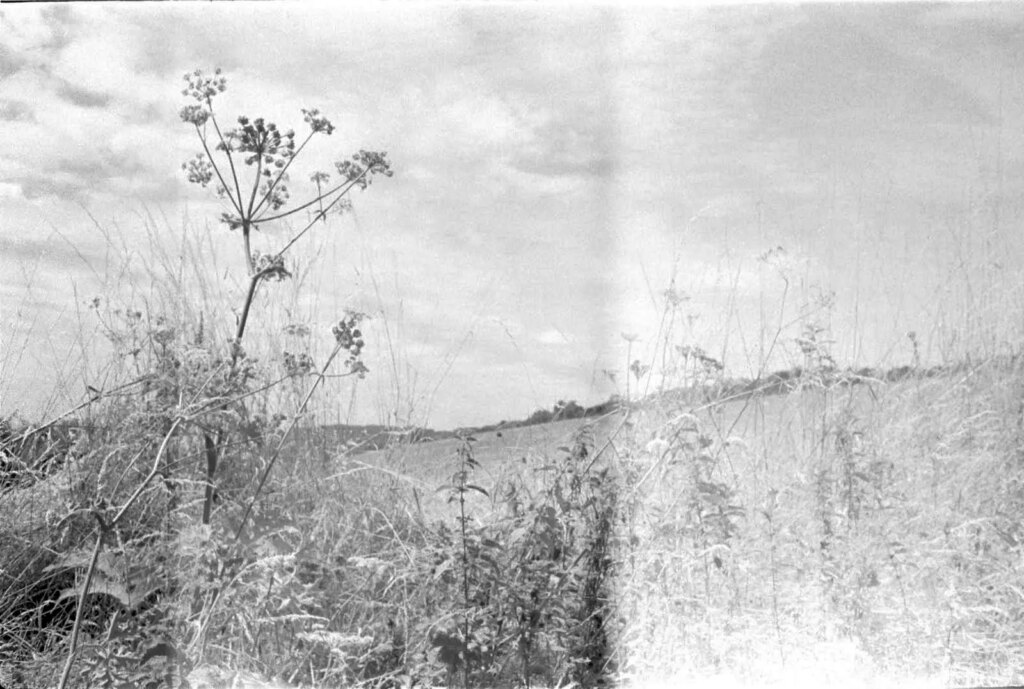
About as bad as the light leak got on this film
Frame 7
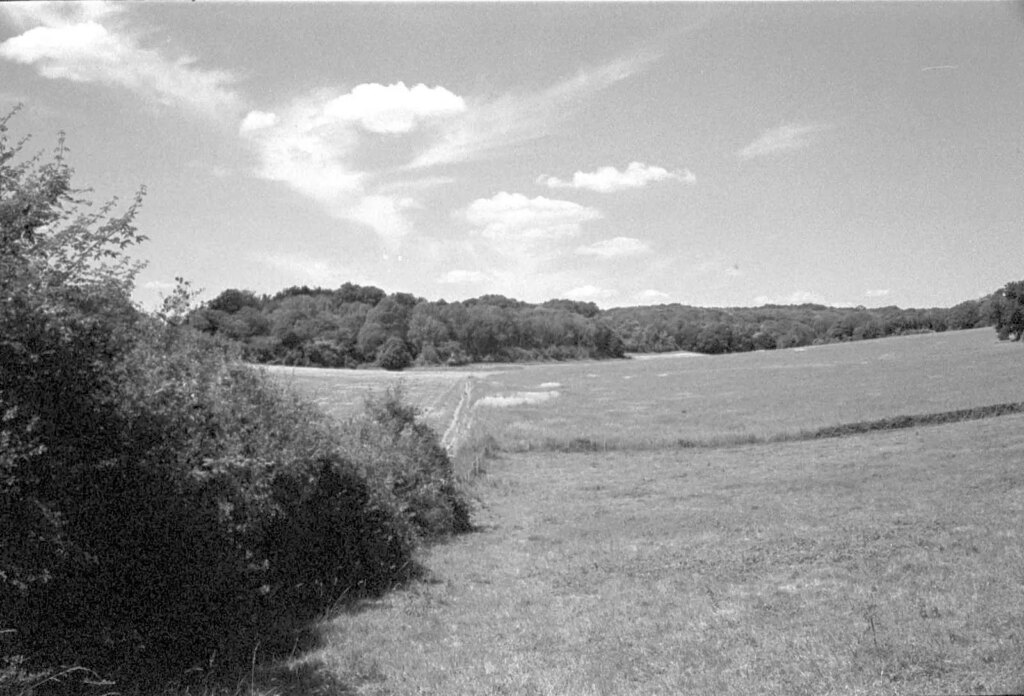
Frame 8 was blank.
Tim
Tim writes:
My name is Tim Denning and I’m very fortunate to live in Audlem, a small village on the southern border between Cheshire and Shropshire. Audlem gets a mention in the 1086 Domesday Book as ‘Alderlyme’. It has always been a bit of a transport focus with roads leading out to other areas. There is Shropshire Street, Cheshire Street, Stafford Street and Whitchurch Road that heads off to the Welsh border just over six miles away. I started my photography journey more than sixty years ago with a Brownie 127, developing film and contact prints in soup bowls. I’m still fascinated by it all.
Frame 9
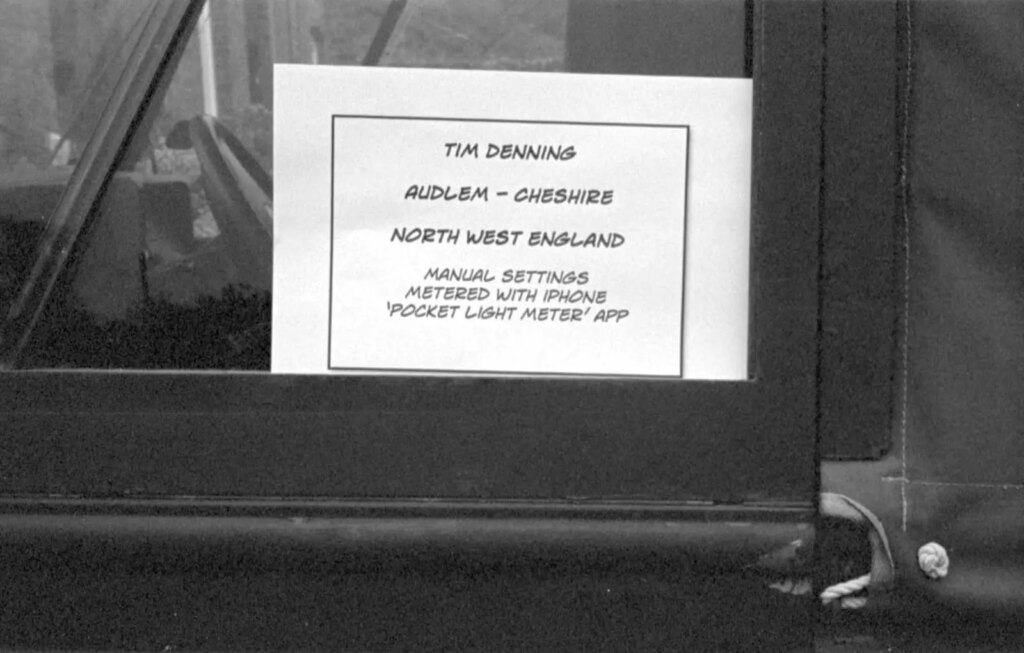
The pictures are all taken on the Shropshire Union canal. This runs through the village connecting the industrial Midlands with canals of North West England. Petrol-Heads will be able to identify the vehicle?
Frame 10
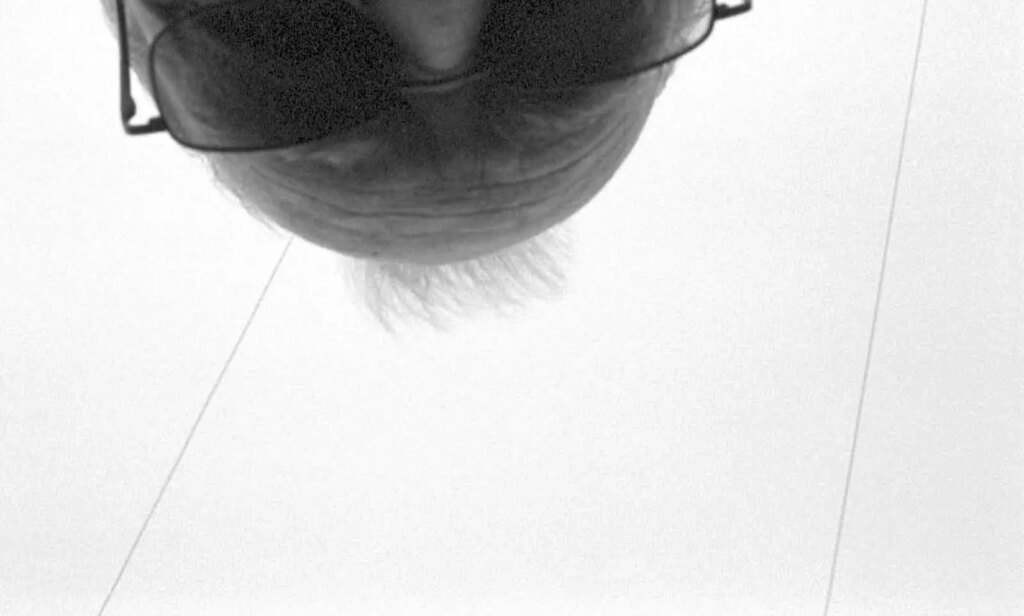
Frame 11
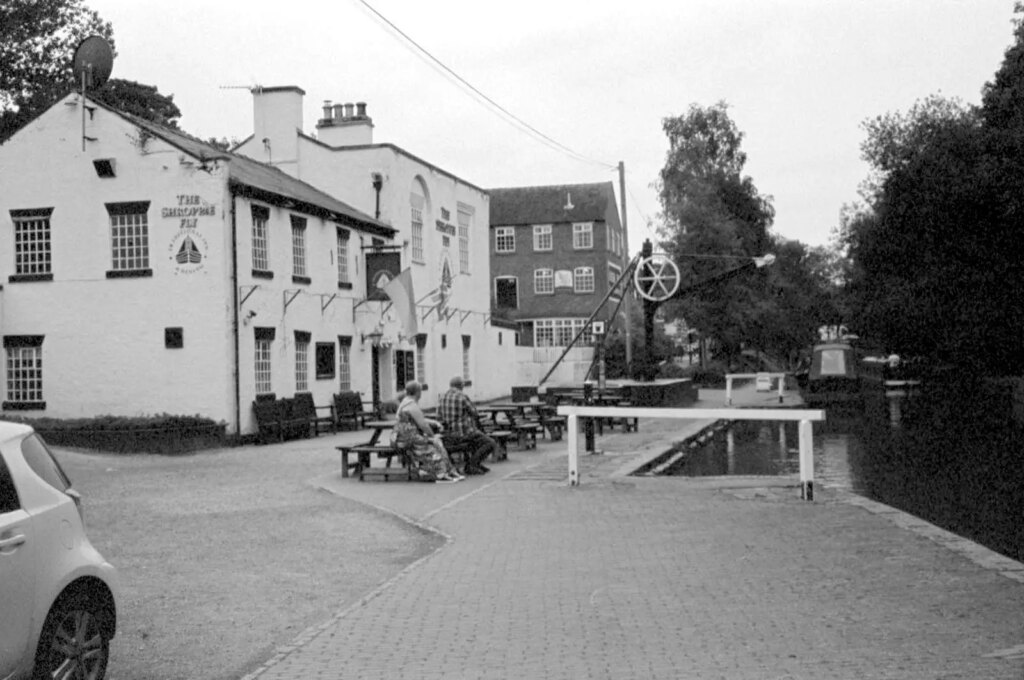
The Wharf area is a popular stop over for canal boats with the ‘Shroppie Fly’ public house on the left named after the fast ‘Fly’ horse drawn boats that took express goods none stop along the canal using fresh teams of horses every few miles. The crane was transplanted from the closed railway station half a mile away.
Frame 12
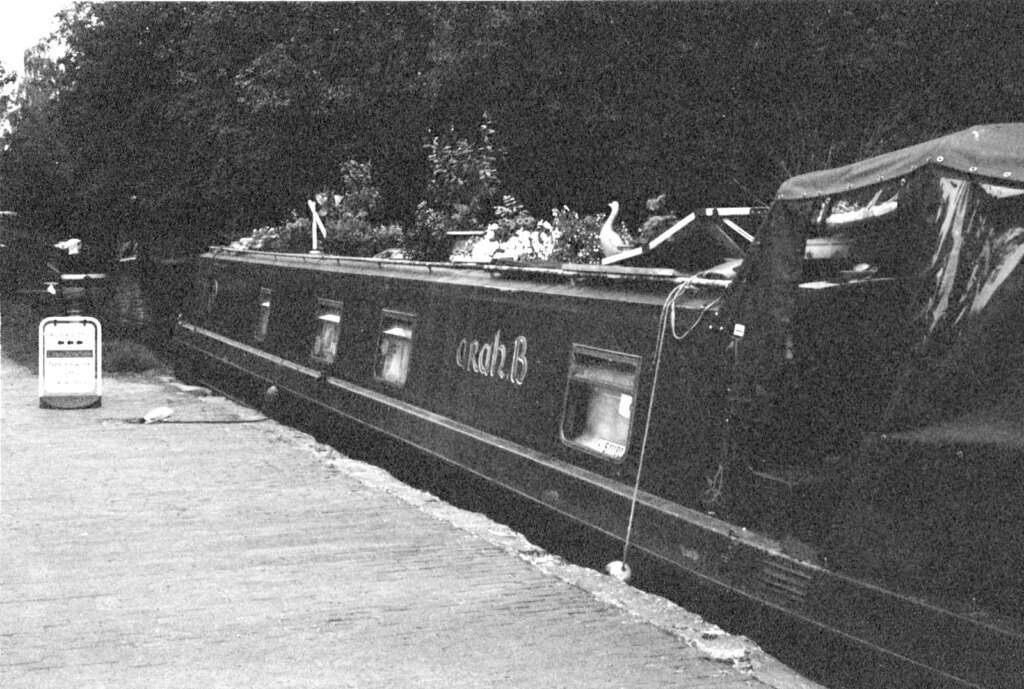
This moored boat is typical of the ‘travelling’ canal boats used by people who move on every few days and live on the boats for weeks, months or years at a time. There are around 34,000 licenced boats on our waterways. Over 5,500 of them are registered as continuous cruisers because they don’t have a home mooring.
Frame 13
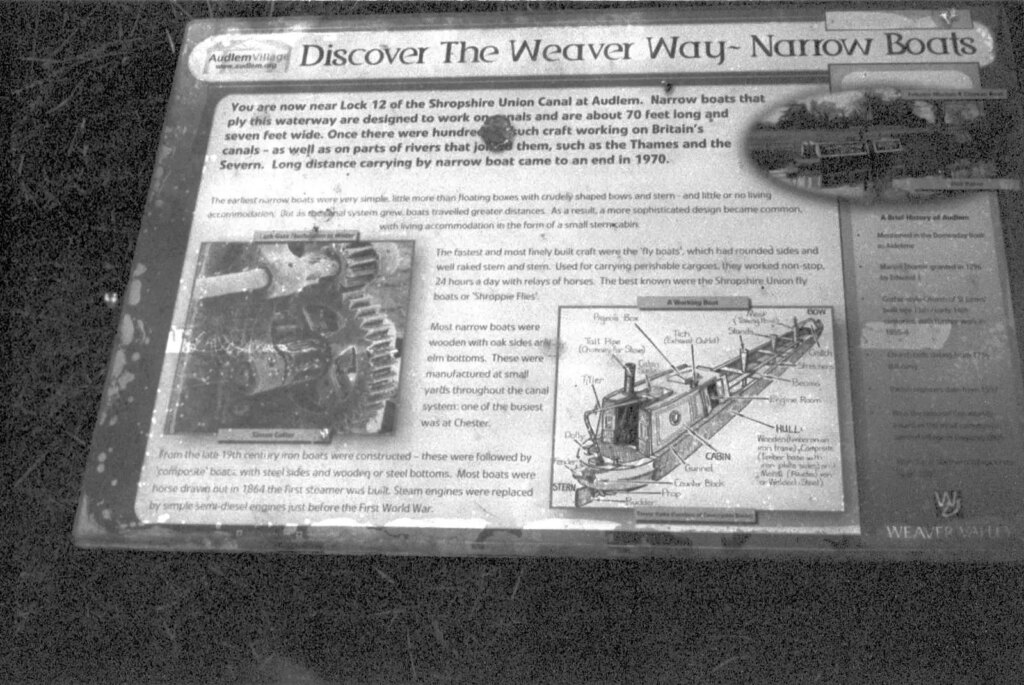
This picture was a bit of an experiment! I was interested to see if the depth of field could cope with the slanted information boards – clearly not… The Weaver Way is a long distance footpath that joins the river Weaver a few miles north of the village and follows the river to the River Mersey near Liverpool.
Frame 14
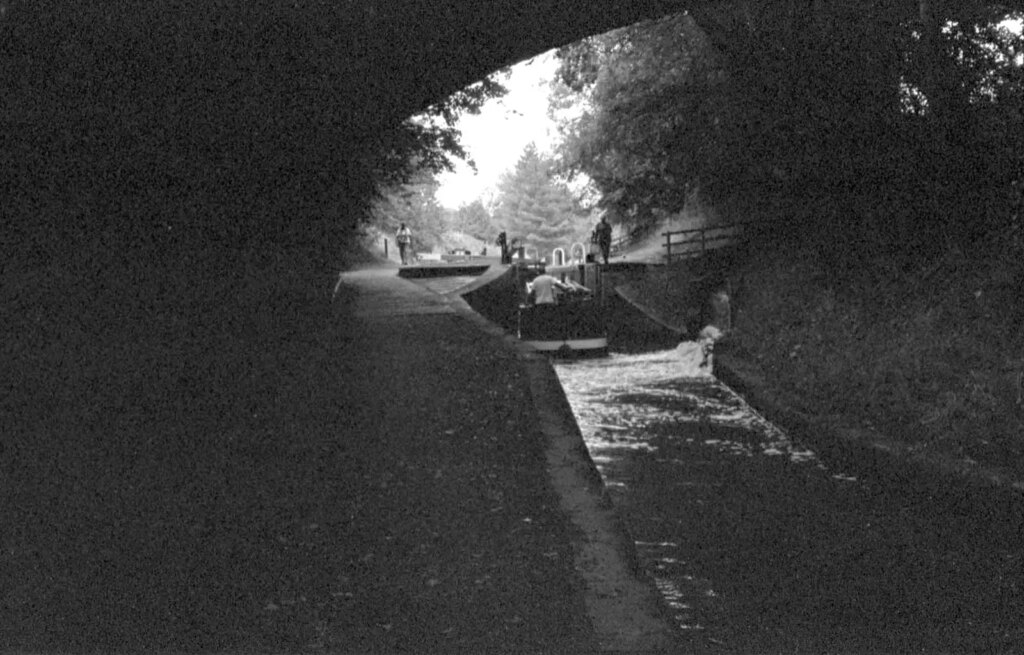
Audlem is well known for a long sequence of 15 locks that raise the canal some 30 metres going south. It can take two to three hours to navigate the flight on a good day and there are often big queues during busy times.
Frame 15
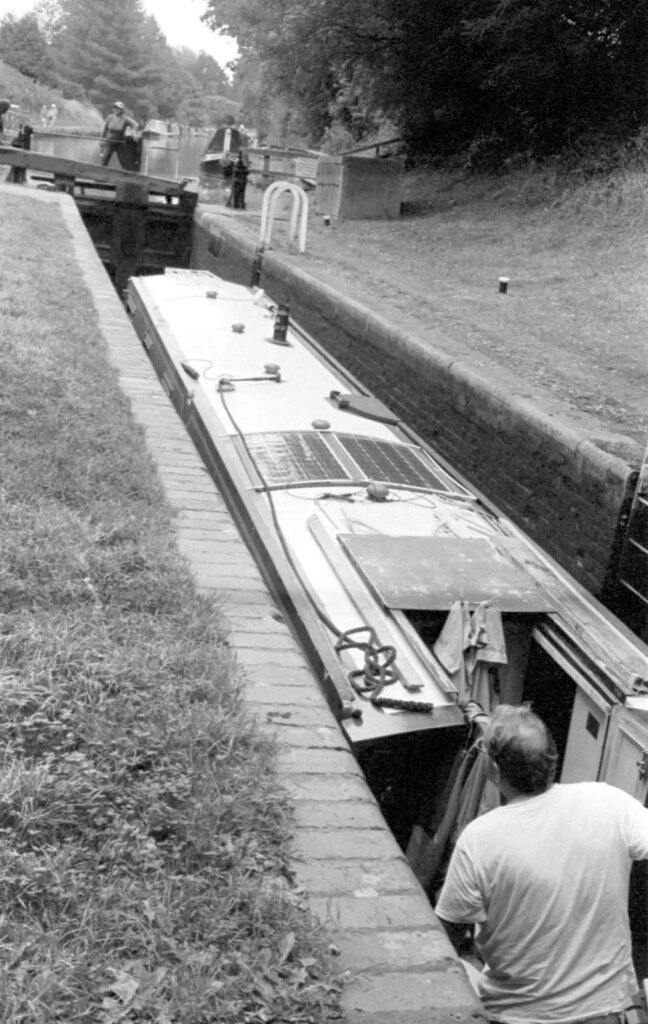
The locks are a tight fit and need to be used with care by those ‘new’ to navigating the canals. The longest boats are 72 feet and just fit. The biggest hazard is perhaps the underwater ledge or sill at the higher end of the lock. A white line painted on the walls of the lock shows where it is and when going down a lock with the water getting lower the stern of a boat can get caught on the cill. This leaves the rear of the boat out of the water and can cause the bow to submerge – not good!
Frame 16
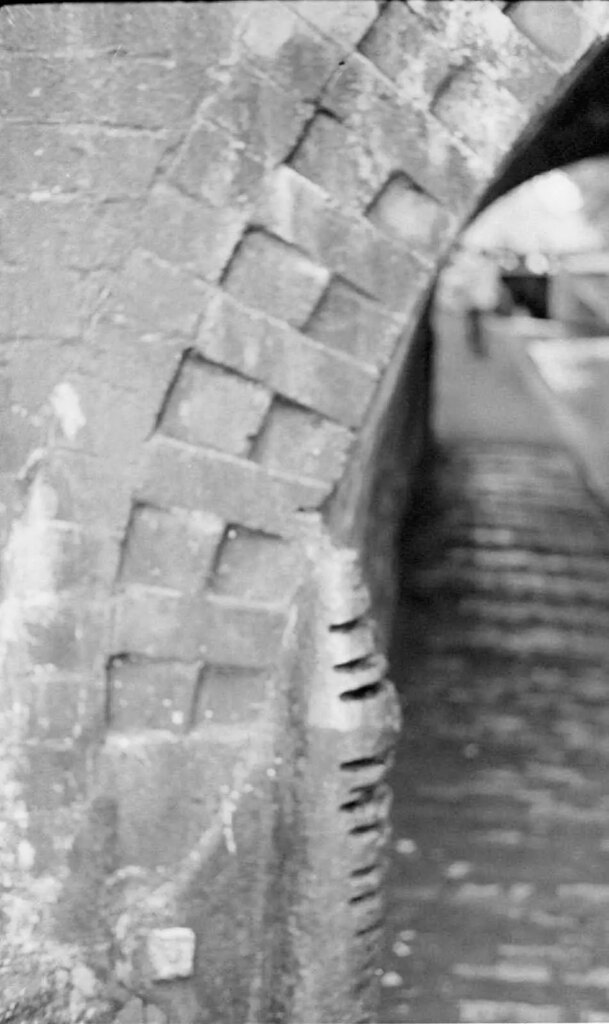
And finally the mystery marks in the cast iron shoulder protecting the brick work. These are seen frequently on the entrance to canal bridges and are deep grooves cut into the cast iron by the tow-ropes of hundreds of horse-drawn barges. As the horse makes it’s way along the tow-path the tow-rope drags across the iron shoulder and jumps from groove to groove.
Mike
Mike writes:
I’m a retired electronic engineer and have been taking photographs since I was given my Grandfather’s Box Brownie at age 5. Currently I’m shooting with second-hand cameras I couldn’t afford when they were new! My 5 shots were all taken in and around the market town of Ulverston on the fringe of the English Lake District. I enjoyed using the Canonet to the extent that I have bought myself one. The heft and solidity are so different to modern cameras. I did find the auto-exposure wasn’t working so exposed using an app on my phone. Somewhat over-exposed by the look of it.
Frame 17
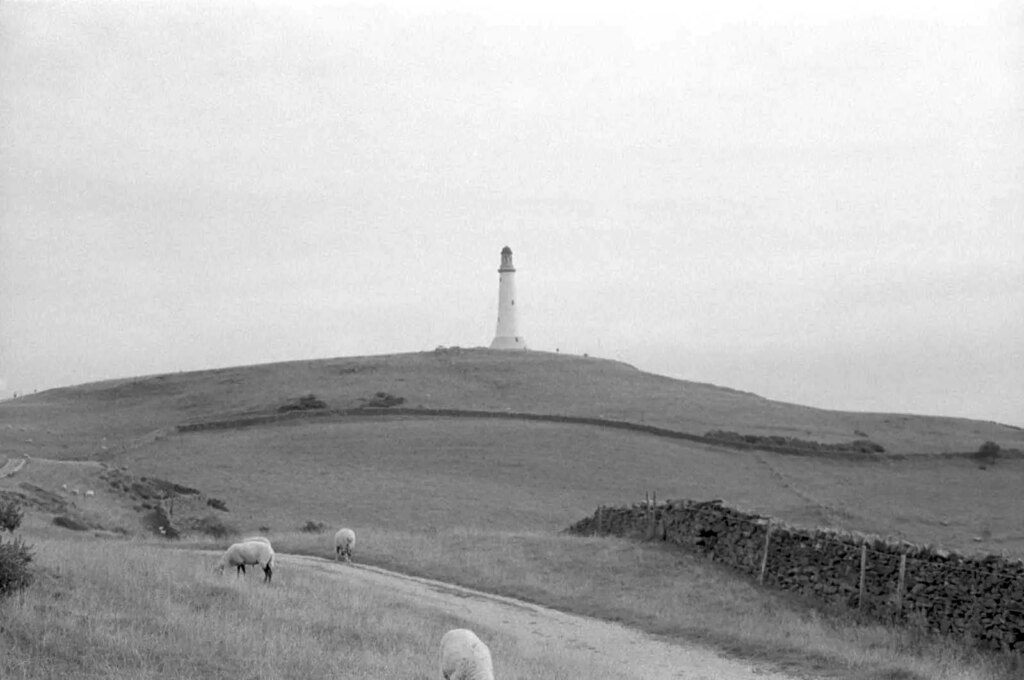
The Sir John Barrow Monument. A replica of the third Eddystone lighthouse (non-functional)
Frame 18
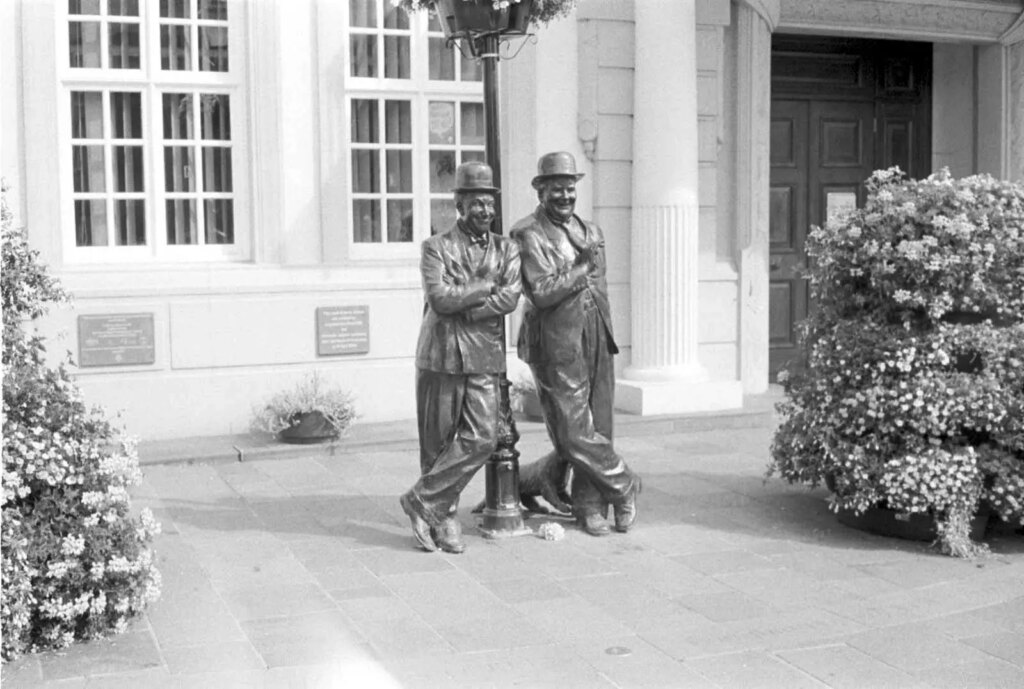
The Laurel & Hardy statue outside the Coronation Hall. Stan was born in Ulverston
Frame 19
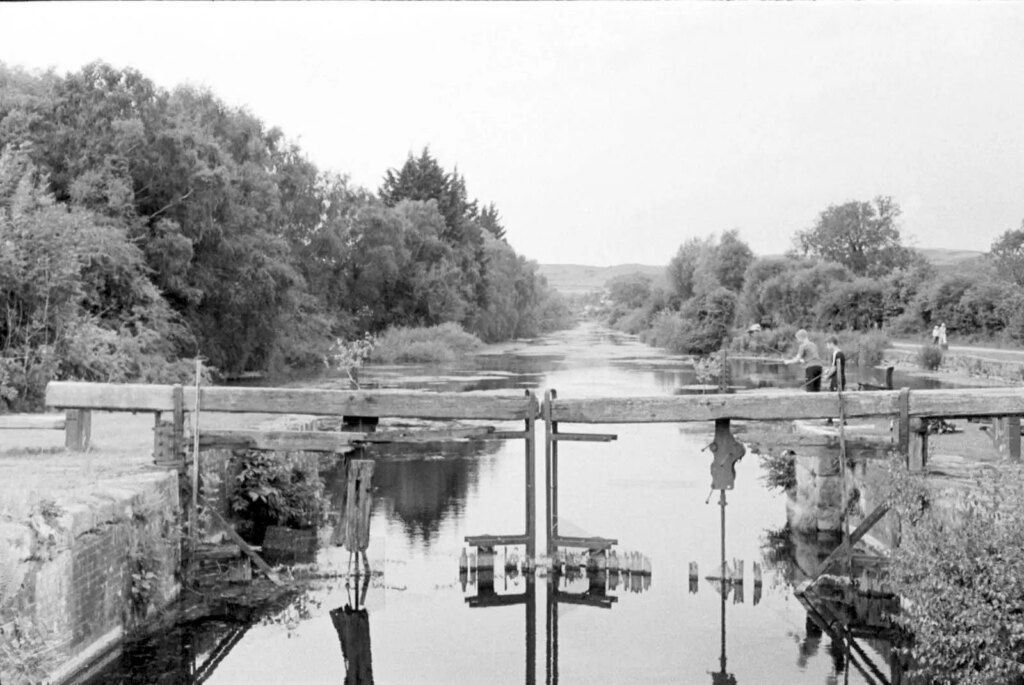
A view up the now land-locked Ulverston Canal. The “shortest, deepest and straightest” in the country
Frame 20
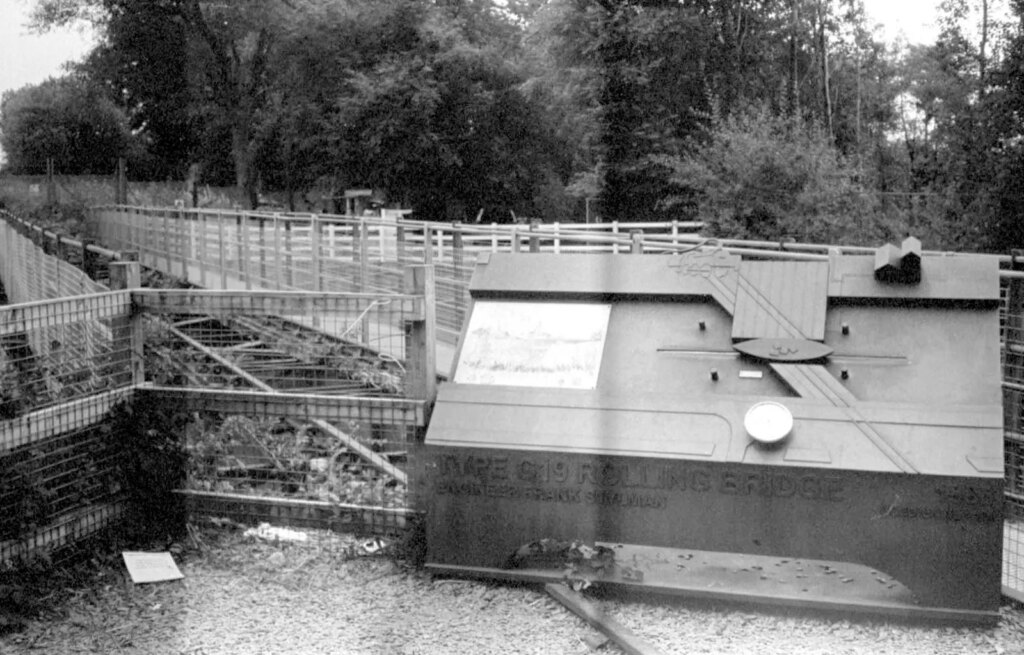
A working model of the rare sliding bridge across the canal, now disused
Frame 21
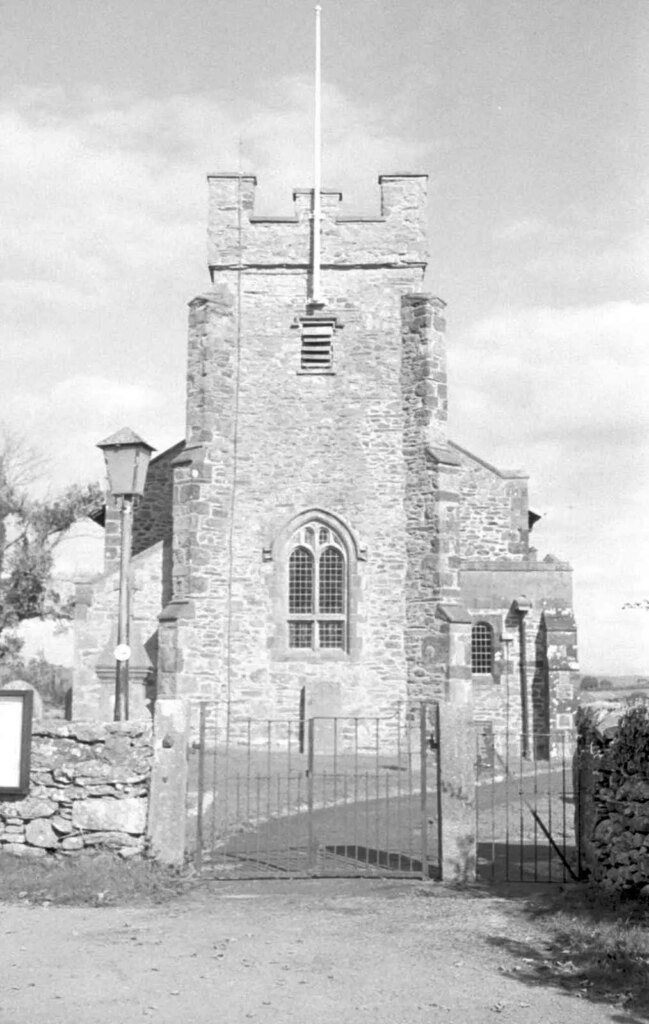
Pennington Church, near where I live
Rodinal Jones
Obviously, owning and using a number of film cameras (a number far greater than I would ever want my wife to know exactly), I could not help but compare and contrast the Canonet with them. It felt a bit heavier than its appearance suggested. The rangefinder patch seemed smaller and dimmer even than my bottom-loading Zorki. For a fixed lens camera it felt a little off balance as well. But only shooting a few frames over the course of a total of perhaps 30 minutes is not a great indicator of how a camera handles.
The controls felt smooth and sure other than the noticeably long travel of the shutter release. A note included in the package from the previous shooter motivated me to choose my own settings rather than to rely upon the camera’s meter. I did detect that when focusing with the rangefinder the distance scale did not match up at all – but I failed to notice this until after my second shot. So the first two shots were made using the distance scale in the low Swedish winter light available.
I found the winding mechanism to be interestingly different yet I would not say that it was awkward really – merely novel. I really enjoyed my short time with this camera and a big thank you goes out to Bob for making this project a reality and for giving me opportunity to take part in it. All said and done, were I to happen upon a moderately-priced example of this camera in clear working order I would not hesitate to snap it up immediately – but I wouldn’t let my wife know about it.
Frame 22
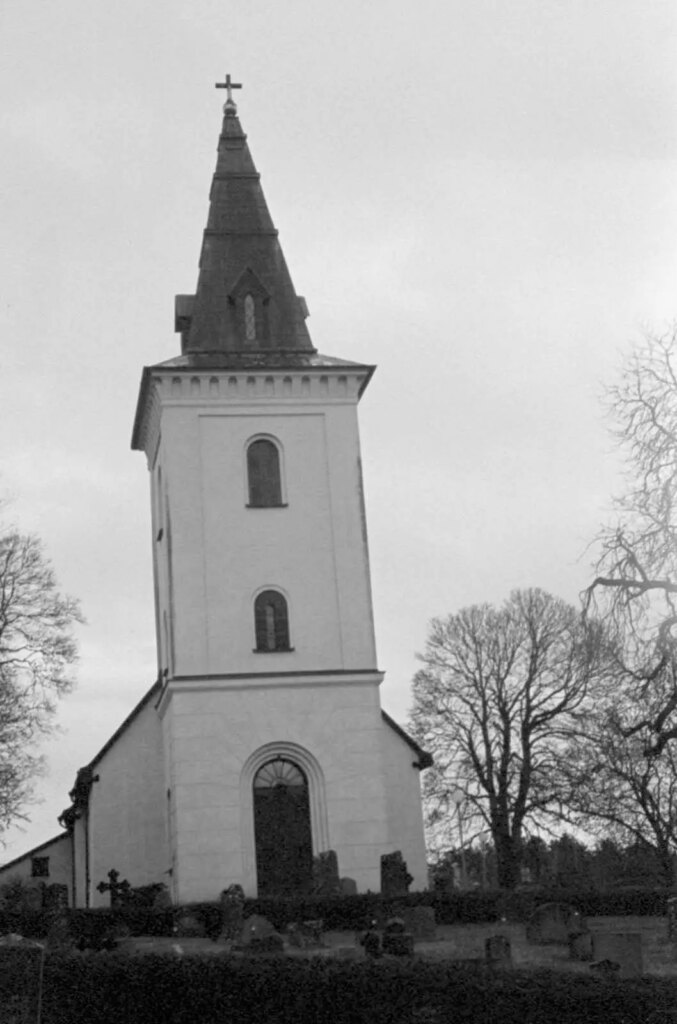
The day after receiving the camera I stopped at a local little church where I had attended the funeral of a very good friend who passed away in July. I remembered looking around on that day as we all walked from the church down into the graveyard and thinking that I should come back some day with a camera. And now I have and will again. It was -3 and the heavy little Canonet was quite cold in my hands as I used the distance scale to focus my shot.
Not trusting the camera’s meter, I relied on experience to choose f11 at 1/125, by virtue of the 400 speed film I was informed the camera held, trusting the latitude of whatever black and white film with which it had been loaded to handle a little likely under-exposure. Thankfully 1/125 was fast enough to compensate for any shivering hand shake but 1/60 might have resulted better exposure.
Frame 23
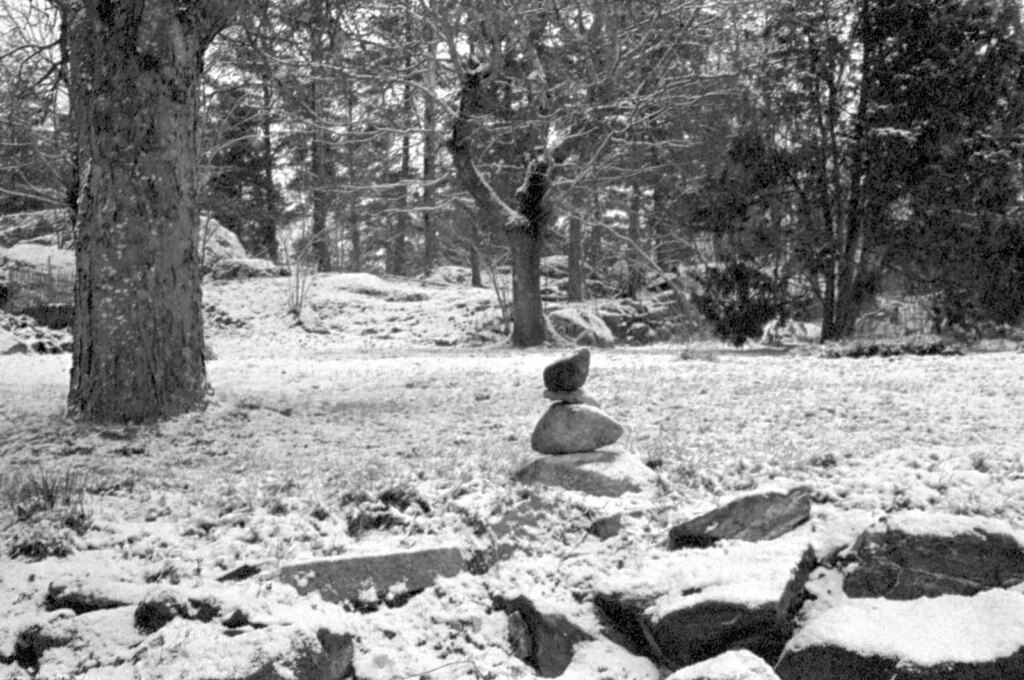
On Saturday I went outside and took a shot of my backyard. Nothing fancy, just my backyard (In -6 degrees). I again chose f11 at 1/125 allowing for about 1 1/2 stops of over-exposure to compensate for the snow. For this shot I also foolishly chose to rely on the distance scale for focusing because of the dim light. I attempted to focus on the stone man hoping that the depth of field of such a small aperture would help to rectify any focussing errors.
Frame 24
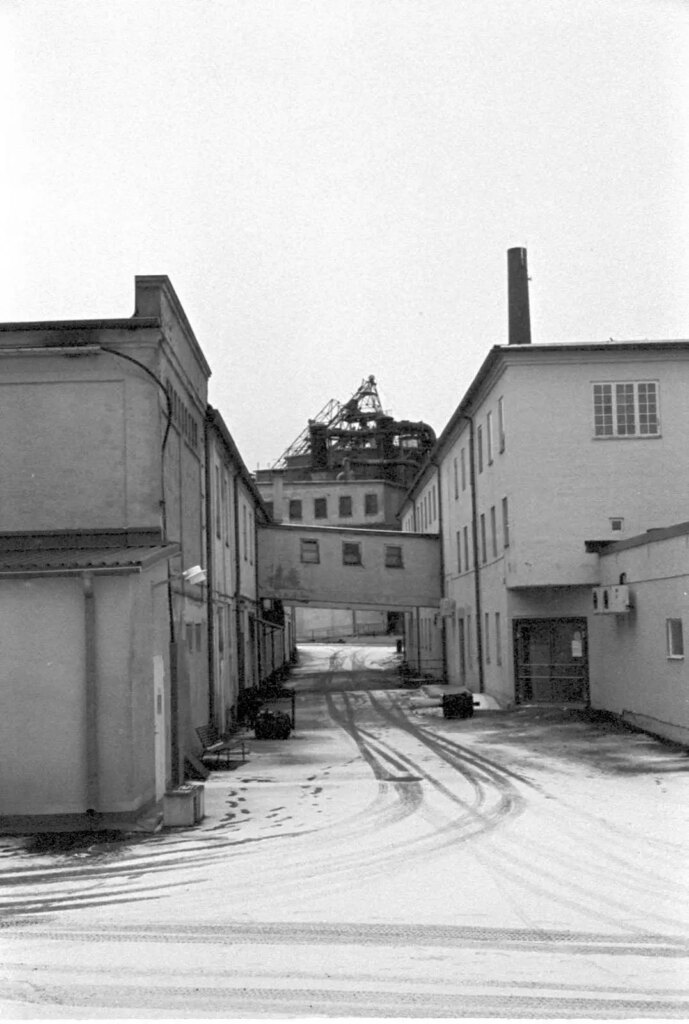
I then needed to deliver a print that our local gallery had purchased from me and stopped off beforehand to take a photo at the ‘bruk’ (the factory which was once used to make cannons). There was absolutely no one around on a Saturday morning. It was there, when focussing for the image, that I discovered that the alignment in the rangefinder and the distance scale did not match so this and the following shots were made trusting the rangefinder and my aging eyes. Settings chosen (again f11 at 1/125 to offset the exposure for the snow), I carefully framed my shot and slowly triggered the shutter release.
One of the wonderful things about a rangefinder is that one still sees the scene even when taking the shot – there is no period of ‘blackout’ as with a SLR. However, this allowed me to see a car as it entered into my frame and disappeared as silently and unexpectedly as it appeared. Thankfully timing and luck were on my side and there is no car in the image. Usually, I would have simply taken another shot. But that could not be when given only a certain number of shots.
On a side note, the whole second floor of the building on the right and beyond the overhead walkway is where I had for a number of years shared the entire space as an studio together with a very good friend who was a well-known sculptress. It was her funeral that I attended at the little church in my first frame. I was financially unable to maintain the space without her, unfortunately.
Frame 25
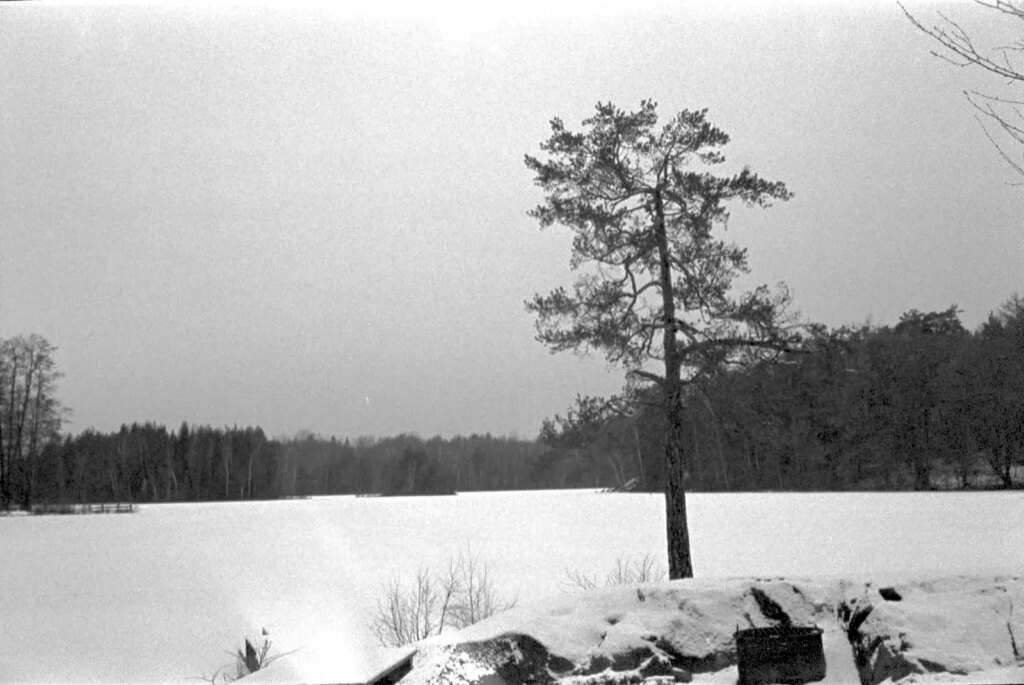
The next shot is of “The Tree”. Not just any tree. This tree, and the lake behind it, have found their way onto nearly every test roll of film I have shot whenever acquiring another new-to-me camera. It is also on nearly every test roll when trying out a new-to-me film. Not really a special tree. Not the most beautiful tree. Yet, it is ’the tree’. (Also shot at f11 at 1/125 for those who may be interested in such things.)
Frame 26
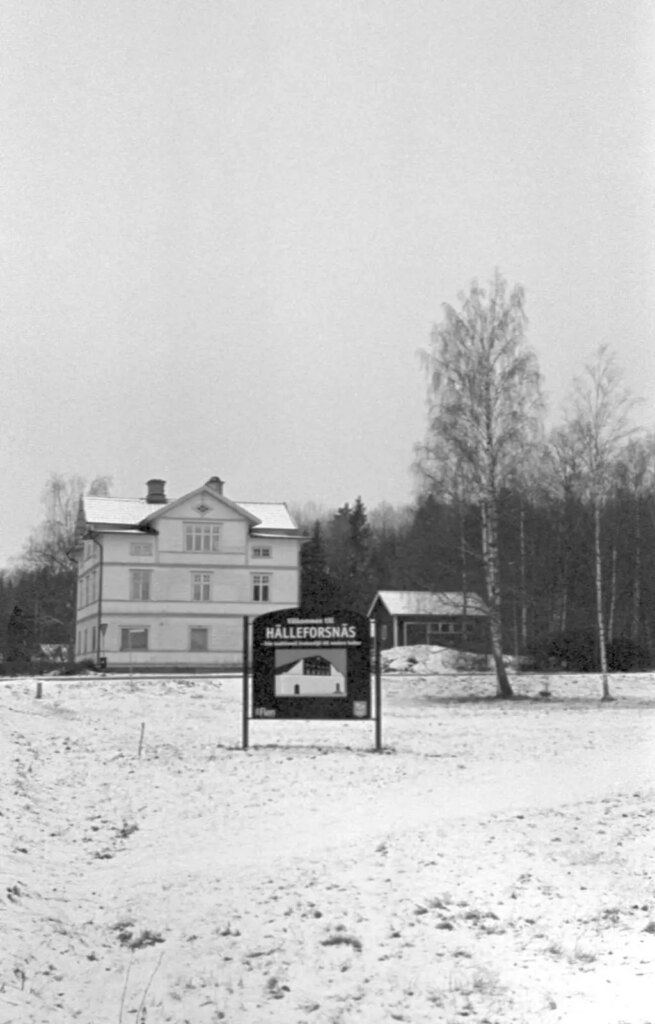
As this little camera is to be traveling far and wide, I thought to include a shot that would provide some sense of ‘location’. This is the view one sees when rounding the sharp corner at the railroad-crossing when entering the village where I live. Yes, I know that a railroad-crossing on a blind corner surrounded by trees is not a good idea – but I neither built nor designed it (nor did any one ask my opinion when planning it). That crossing is not in the shot but the welcome sign which is right after the crossing should let the viewer know that this image was taken here in little Sweden and not in Germany, or France, or somewhere else. I had attempted to focus on the sign.
Frame 27
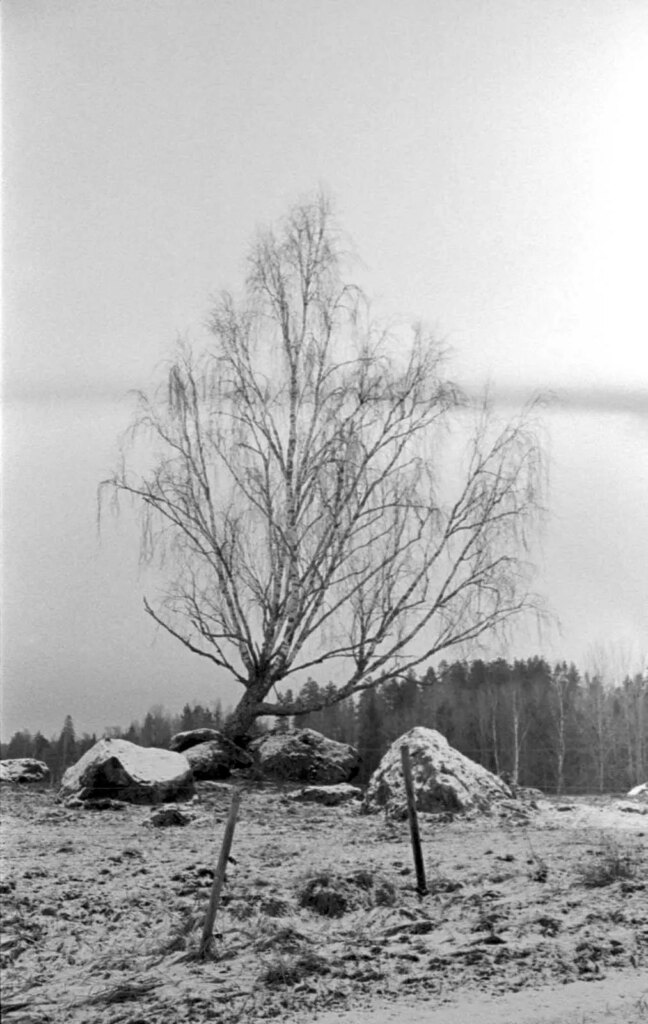
This is when I became confused. The frame counter showed 24. It read 20 when I first got the camera. My brain befuddled by the cold I concluded that I had only shot four frames and proceeded to drive to where I knew that there lived another lone tree to include in my allotted five frames. Oddly, in both this image and the first image of the church I can see some sort of line or gradation in the exposure for which I have no explanation. I notice the same thing occurring in a few of the other shots on the roll and would love to hear any possible clarifications on the possible cause.
Tobias
Tobias writes:
The last three photos were taken near the main library in Örebro. I had a little time on my hands and just snapped away. At one point I was caught by the shape and the reflection of the building across the stream. I forgot entirely about the parallax-issue (too much mirrorless photography). The dark squares in first photo are the naked earth from under the cars that have left, while the snow covers the ground.
The Canonet 28 is a favourite of mine. It has made some nice photos for me. But primarily I have seen it inside and out, having serviced and sold more than 20 of them on Etsy.
I was happy to take part in this project – I just wish I had more time to commit.
Frame 28
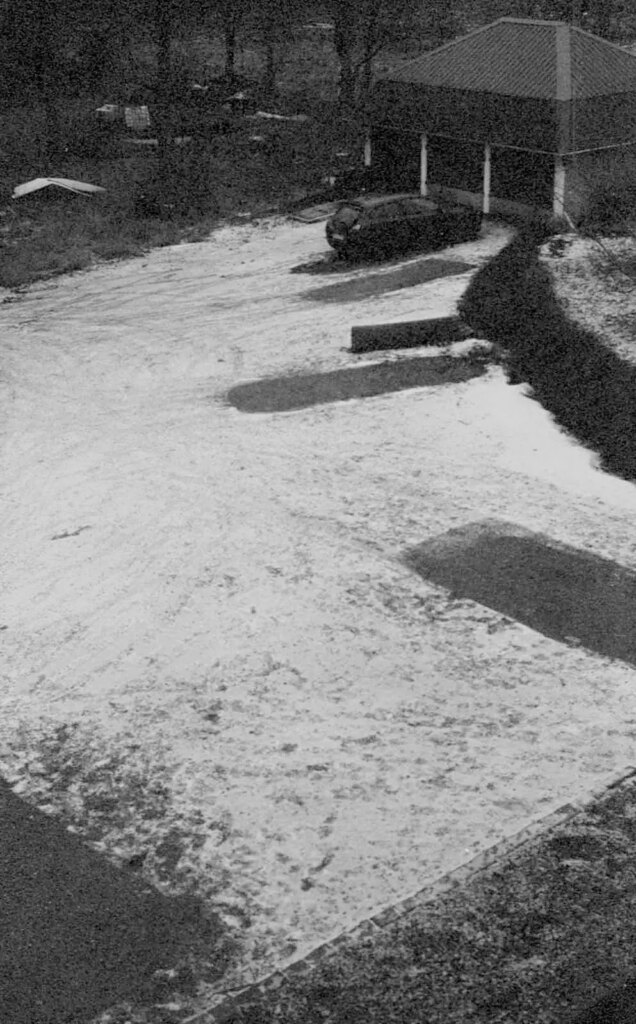
“The dark squares.. are the naked earth from under the cars that have left, while the snow covers the ground”
Frame 29
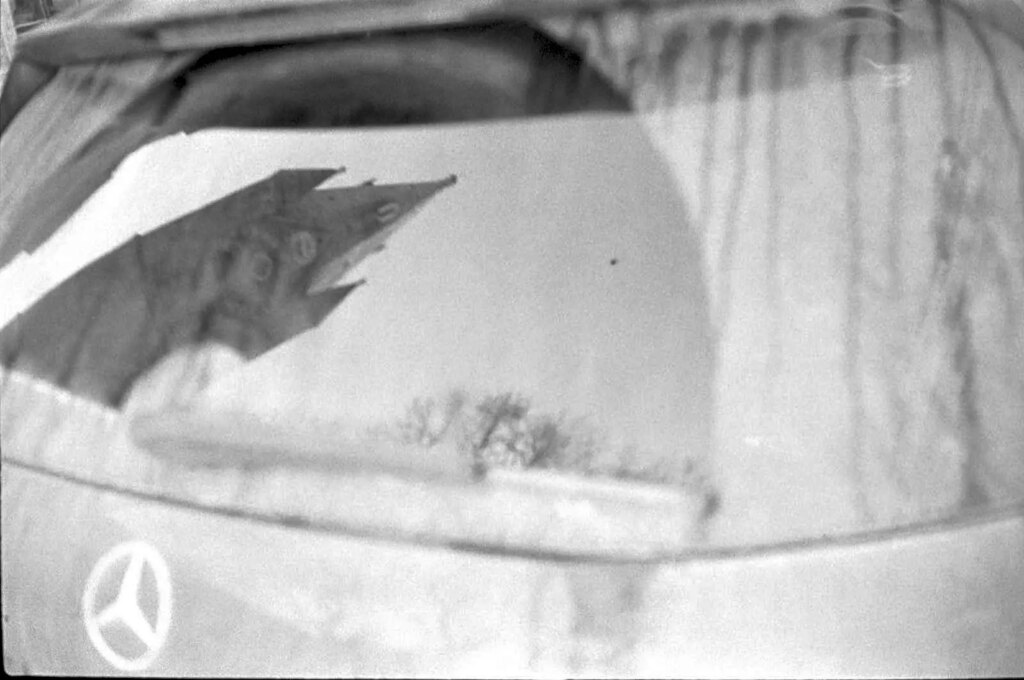
Frame 30
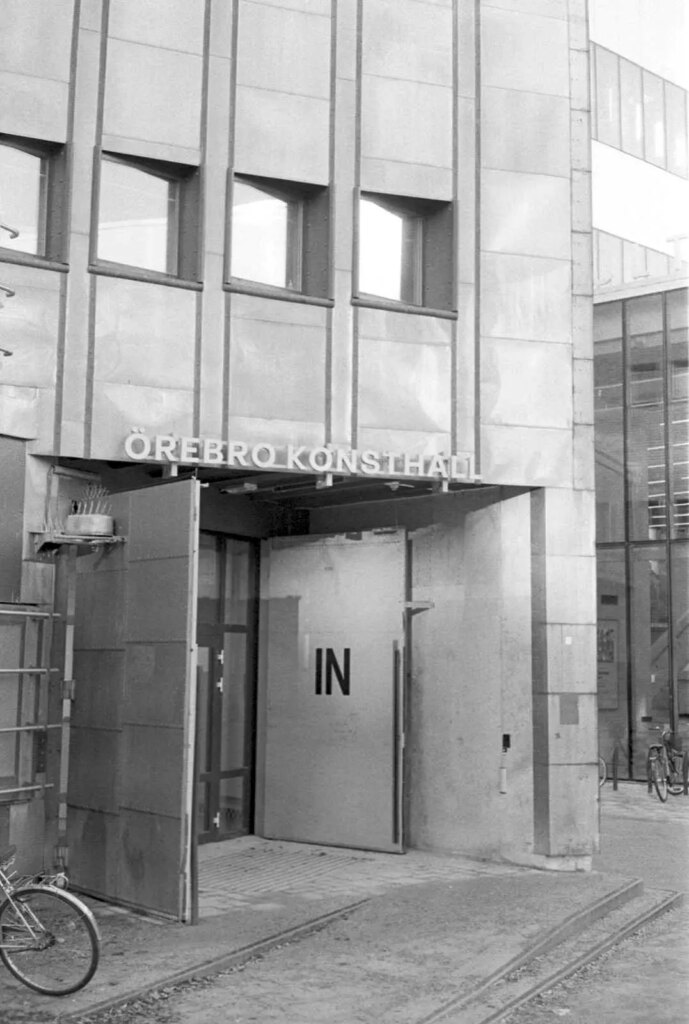
Örebro Art Gallery
Frame 31
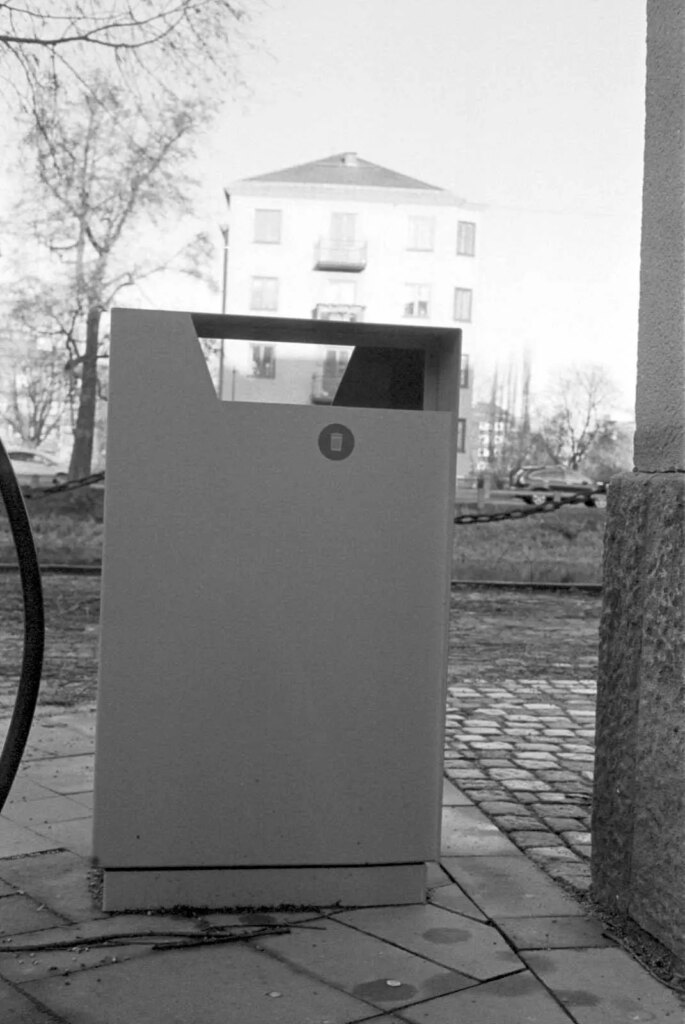
“I was caught by the shape…”
Frame 32
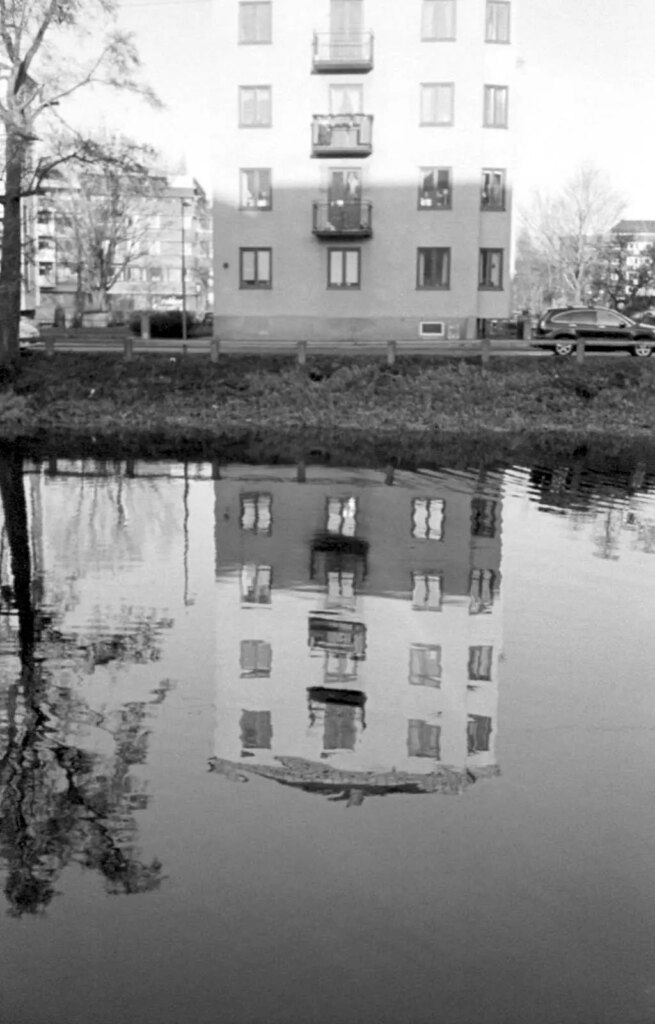
“..and the reflection of the building across the stream”
Thanks to all
My thanks to all the above contributors and also to Bjarte, who mailed the film back to the UK for me from Norway. I’m hoping that we will see some shots from Bjarte on the next roll.
The Canonet seems to be holding up quite well. There is some evidence of light leaks, but nothing that seems to be getting worse. On the whole, quite a testament to a sixty year old camera.
Share this post:
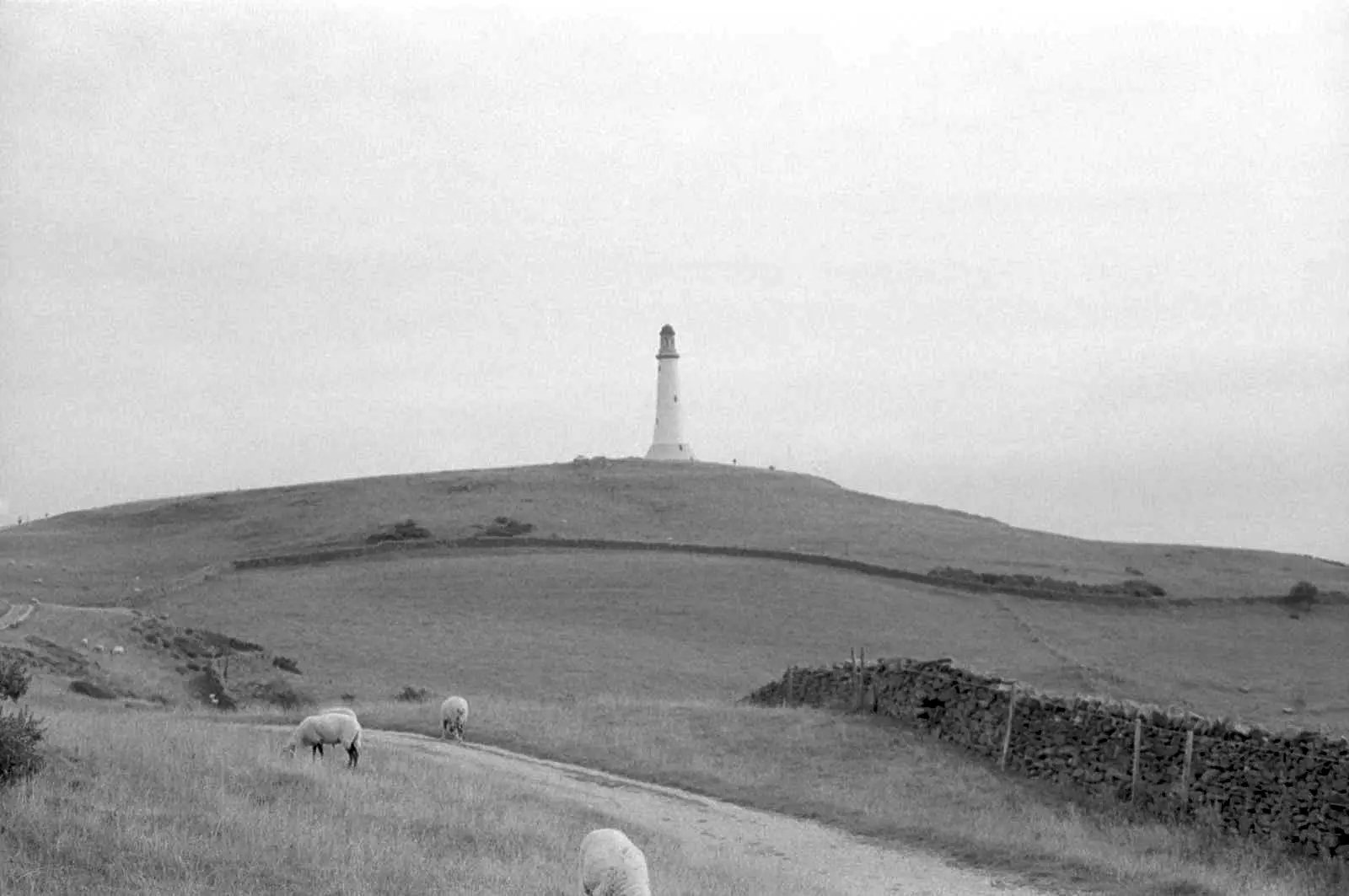








Comments
Julian Tanase on Travelling from Rochester to Vedevåg – the third roll from the Original Canonet
Comment posted: 08/09/2023
Comment posted: 08/09/2023
DANIEL J CASTELLI on Travelling from Rochester to Vedevåg – the third roll from the Original Canonet
Comment posted: 11/09/2023
What a nice posting on a rainy New England day! I enjoyed the comments from the photographers as much as their photos.
Both little cameras remind me of the two Voyager spacecraft. Overcoming odds, quiet for a period of time then they pop up with photos & stories. I hope "our camera" makes it from FLA to South America.